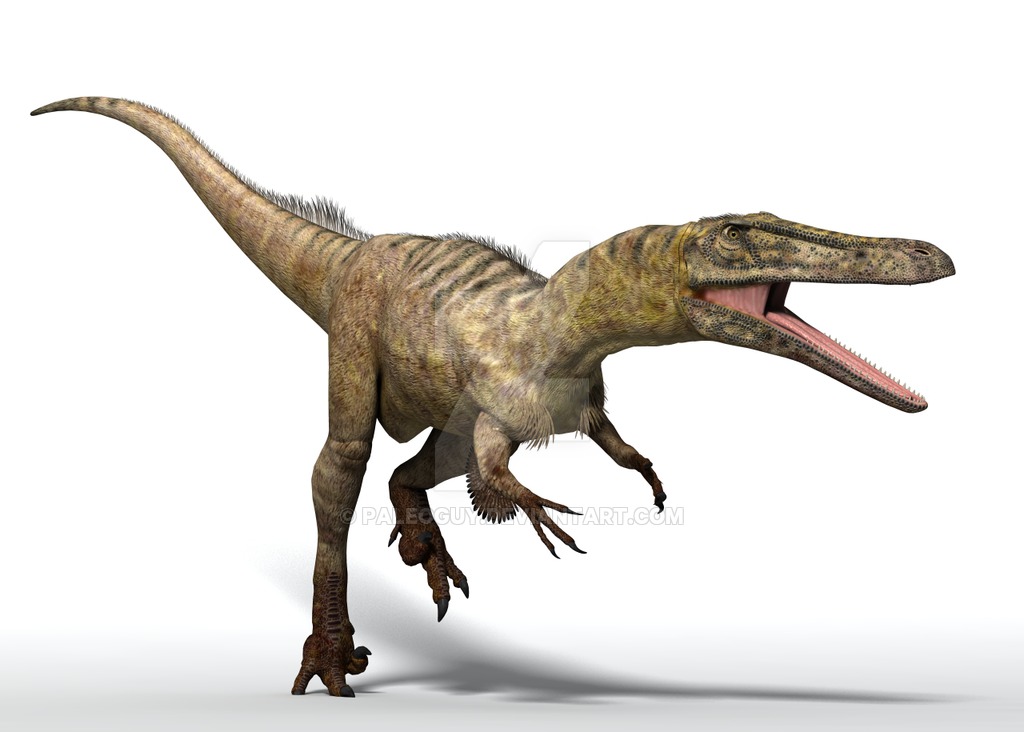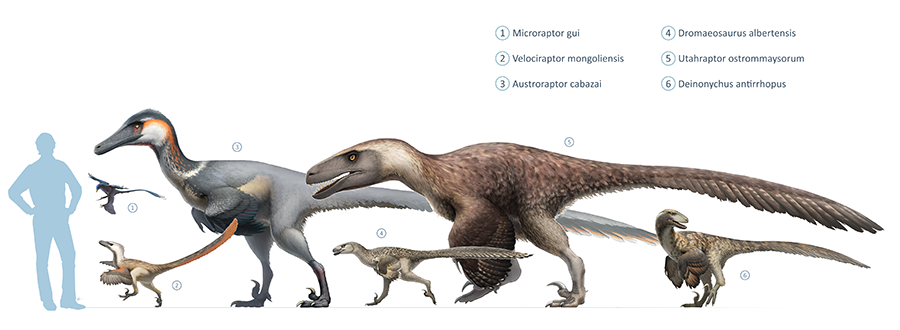Austroraptor
Austroraptor is a genus of dromaeosaurid dinosaur that lived about 70 million years ago during the Cretaceous Period in what is now modern Argentina. Austroraptor was a medium sized, moderately-built, ground-dwelling, bipedal carnivore, that could grow up to 5–6 m (16.4–19.7 ft) long. Its length makes Austroraptor one of the largest dromaeosaurids known, with only Achillobator, Dakotaraptor, and Utahraptor approaching or surpassing it in length. It is the largest dromaeosaur to be discovered in the Southern Hemisphere. Particularly notable about the taxon were its relatively short forearms, much shorter in proportion when compared to the majority of the members of its group.
The type specimen of Austroraptor cabazai, holotype MML-195, was recovered in the Bajo de Santa Rosa locality of the Allen Formation, in Río Negro, Argentina. The specimen was collected in 2002 by the team of Fernando Emilio Novas of the Museo Argentino de Ciencias Naturales. It consists of a partial skeleton with skull. The fossil was prepared by Marcelo Pablo Isasi and Santiago Reuil.
In 2008, the type species Austroraptor cabazai was named and described by Fernando Emilio Novas, Diego Pol, Juan Canale, Juan Porfiri and Jorge Calvo. The genus name Austroraptor means "Southern thief", and is derived from the Latin word Auster meaning "the south wind", and the Latin word raptor meaning "thief". The specific name cabazai, was named in honor of Héctor "Tito" Cabaza, who founded the Museo Municipal de Lamarque where the specimen was partially studied.
Phil Currie and Ariana Paulina-Carabajal in 2012 referred a second specimen to Austroraptor cabazai, MML-220, found in 2008. This specimen, a partial skeleton with skull of an adult individual slightly smaller than the holotype, is also housed in the collection of the Museo Municipal de Lamarque in Argentina. It complements the holotype in several elements, mainly the lower arm, hand and foot.
Considered large for a dromaeosaur, Austroraptor cabazai measured about 5 metres (16.4 ft) in length from head to tail. In 2010, Gregory S. Paul estimated its length at 6 metres, its weight at 661.387 pounds or 300 kilograms. It is the largest dromaeosaur to be discovered in the Southern Hemisphere. The type specimen, labeled MML-195, consisted of a fragmentary skeleton including parts of the dinosaur's skull, the lower jaws, a few neck and torso vertebrae, some ribs, a humerus, and assorted bones from both legs. However little of the entire skeleton was found, what bones were available for analysis expressed some distinct characteristics that differentiate Austroraptor from other dromaeosaurs. A. cabazai's 80 centimeter-long skull was low and elongated, much more so than that of other dromaeosaurs. Several of its skull bones bore some resemblance to that of the smaller troodontid deinonychosaurs. The front limbs of this taxon were short for a dromaeosaur, with its humerus less than half the length of its femur. Among the Dromaeodauridae, only this genus, Tianyuraptor, Zhenyuanlong and Mahakala have similarly reduced forelimbs. The relative length of its arms has caused Austroraptor to be compared to another, more famous short-armed dinosaur, Tyrannosaurus.
A cladistic analysis of the specimen's anatomical features by the describers placed Austroraptor within the subfamily Unenlagiinae of the Dromaeosauridae. This assignment was based on characteristics observed in the bones of the skull, the teeth, and the geometry and formation of the specimen's vertebral elements. It was determined that Austroraptor was a close relative of the unenlagiine dromaeosaur Buitreraptor, with which it shares certain derived characteristics of the neck vertebrae.
The specimen was found in terrestrial sediments that were deposited during the Maastrichtian stage of the Cretaceous period, approximately 70 million years ago.
Austroraptor shared its paleoenvironment with early mammals, pterosaurs and the titanosaurids Saltasaurus and Rocasaurus, which may have served as prey for this dromaeosaur.
Source: https://en.wikipedia.org / www.natgeo.com











